A woodcut masthead is worth a thousand words… Slavery…
May 16, 2022 by GuyHeilenman · Leave a Comment
A few weeks back my favorite person posted: Take a Closer Look … The Delicate Details of Woodcut Prints…
Such prints are truly amazing. However, as is the case with (most?) works of art, to some degree they tell a story. One such story is that of “Slavery – The Cry for Emancipation”, as told through the masthead of The Liberator. While we have many historic newspapers containing articles chronicling the path from the horrors of slavery, through emancipation, then on to suffrage and beyond, few rival what is communicated through this most-amazing, intricate, illustration which was present at the top of nearly every issue. At a distance its beauty speaks to the eyes, but a close-up view shouts to the heart: ENOUGH!
See for yourself:

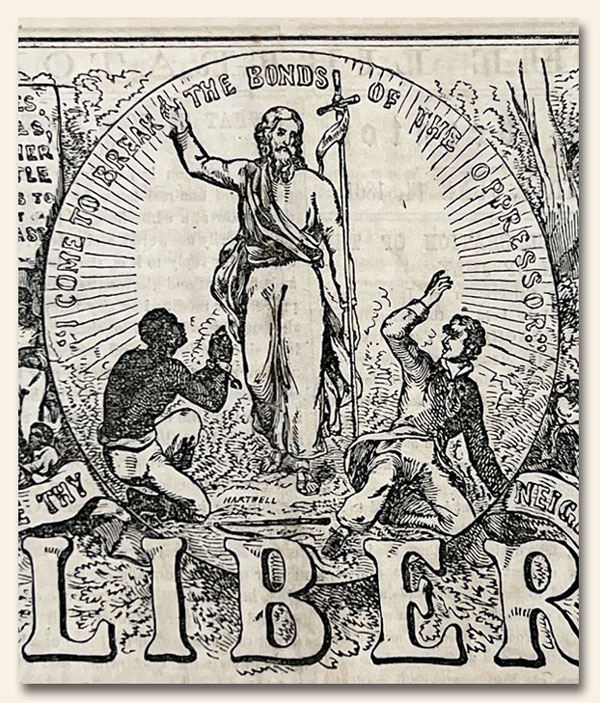
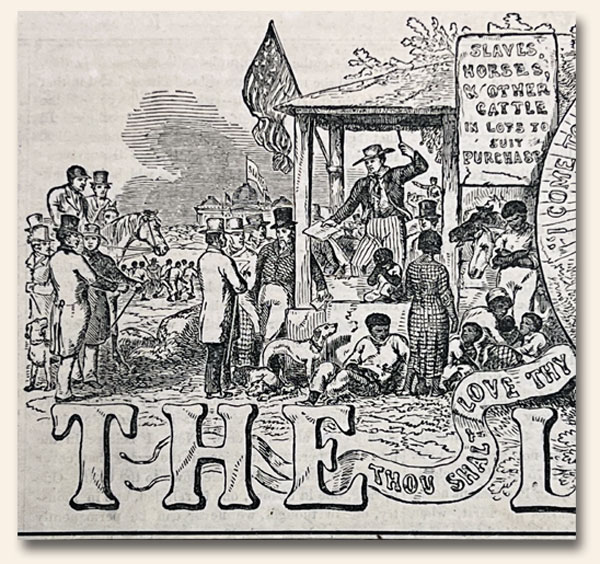
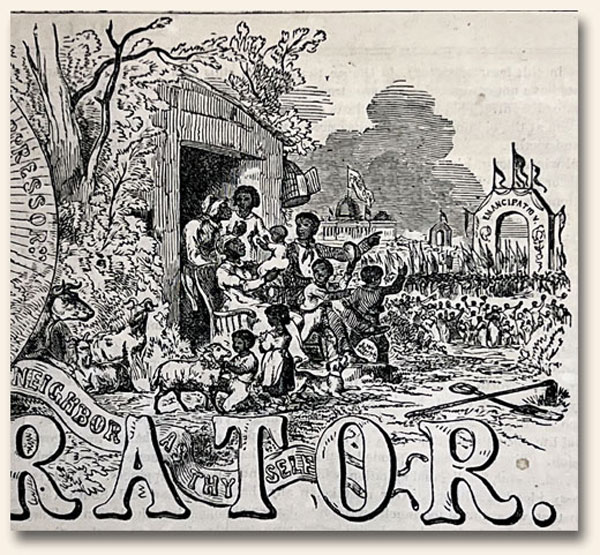
William Cowper speaks out against slavery (1791)… They put it in print…
February 25, 2021 by GuyHeilenman · Leave a Comment
Thank goodness “cancel culture” did not exist (at least in [Wilbur]force) back in 18th century.
Flashback to the late 17oo’s… Although slavery had been part and parcel of many cultures for thousands of years, and was certainly woven throughout all aspects of life and commerce in Great Britain, some were staunchly against the practice and had the courage to fight for those whose skin color did not match their own. One such person who was particularly outspoken in this regard was the popular and well-respected poet/hymnologist William Cowper. Although taking such a stand was both an affront and a danger to the political and social mores of the day, he (and others with similar convictions) were permitted to speak, and in the long-run, the world’s view was eventually transformed. How do we know? They (actually) put it in print!
The following excerpt from one of his anti-slavery poems was printed in the Columbian Centinel dated June 16, 1791: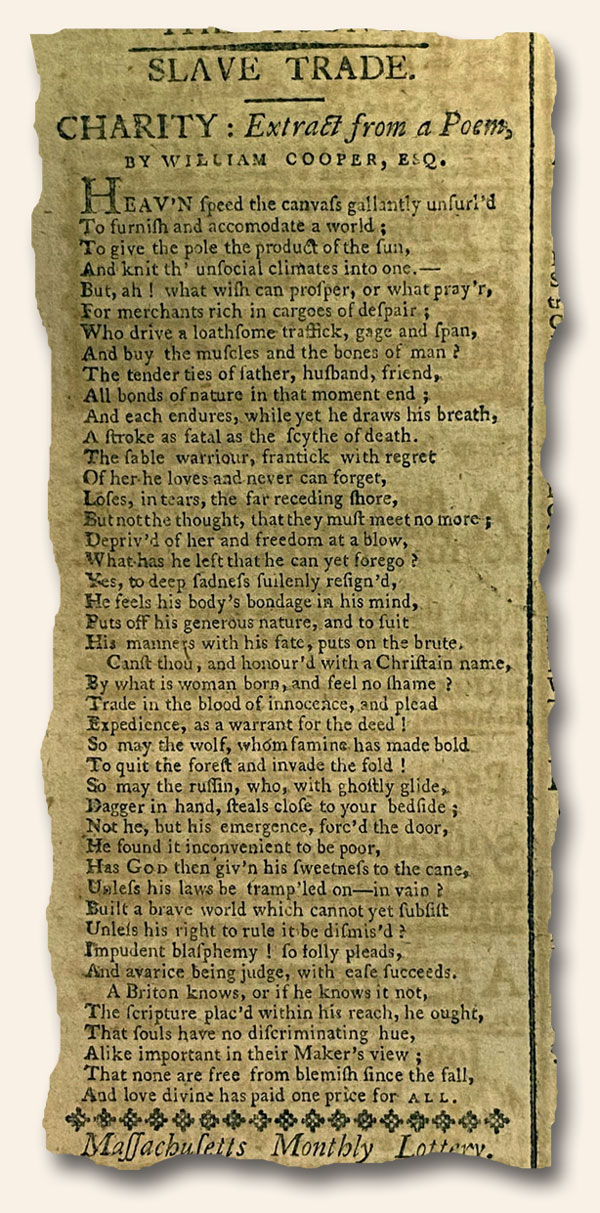
Snapshot 1807… William Cowper and the Slave Trade…
October 22, 2020 by GuyHeilenman · Leave a Comment
We recently discovered a Gazette Of The United States, For The Country (Philadelphia), dated May 25, 1807 which had a timely reprinting of William Cowper’s poem regarding the abolition of the Slave Trade – just a few weeks after the enactment of the Slave Trade Act of 1807 (United Kingdom). It would still be another quarter-century before slavery within the Britain Empire would be abolished. 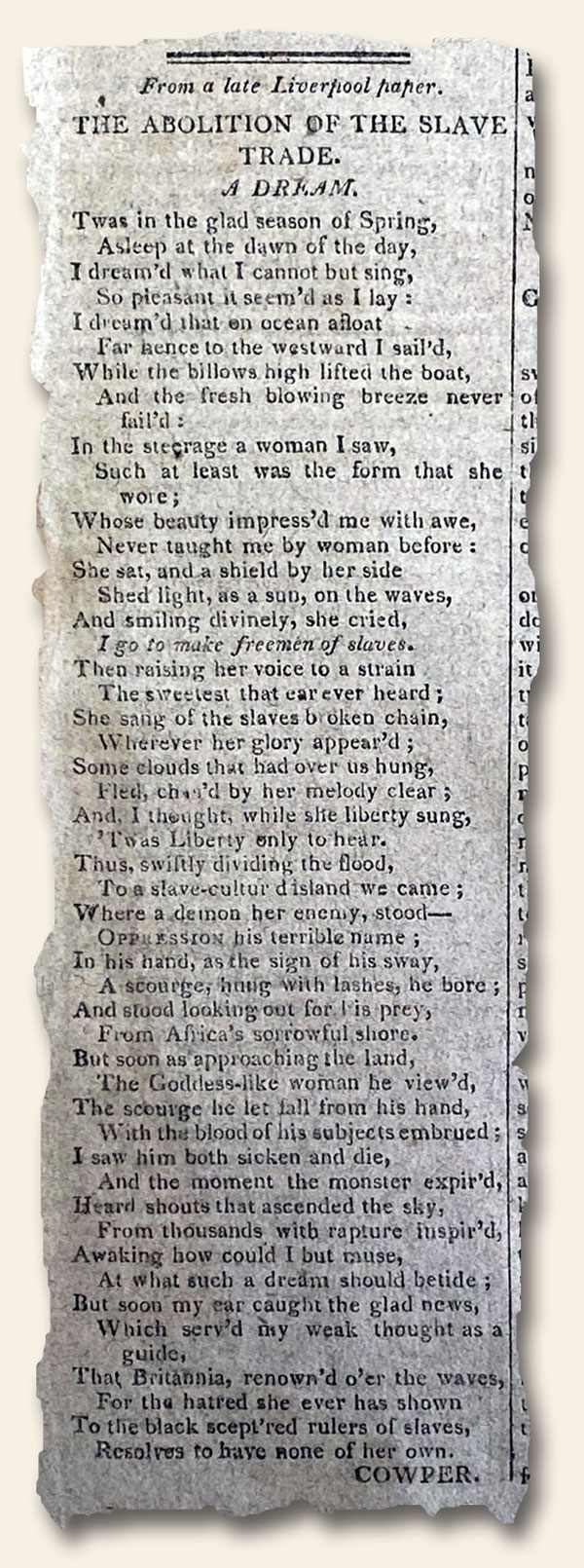
They Put It In Print… Black Americana……
February 25, 2019 by GuyHeilenman · Leave a Comment
 Few nations can boast of a peaceful trek from being a slave state (at least in part) to the enslaved people-group holding the highest position in the very land that had once enslaved their ancestors. Whereas there is still much work to be done, the United States’ governmental structure allows, and even promotes such progress. Since much of these historic events were put in print, the link below is able to provide a chronology of many of the highlights of this amazing, albeit bumpy road. Since the link only provides a snapshot of each issue’s content, in order to view the related coverage you may need to click on the item number of several in order to view the item’s full description.
Few nations can boast of a peaceful trek from being a slave state (at least in part) to the enslaved people-group holding the highest position in the very land that had once enslaved their ancestors. Whereas there is still much work to be done, the United States’ governmental structure allows, and even promotes such progress. Since much of these historic events were put in print, the link below is able to provide a chronology of many of the highlights of this amazing, albeit bumpy road. Since the link only provides a snapshot of each issue’s content, in order to view the related coverage you may need to click on the item number of several in order to view the item’s full description.
BLACK AMERICANA (and more)
Note: While perusing the issues shown in the link above, one might wonder why a link to a chronology of “Black Americana” issues includes those from outside the United States. Answer? Life rarely happens in a vacuum – and this is equally true with the trek shown above. Both the related tragedies, atrocities, and eventual progress which transpired outside the U.S. were often foundational in the thinking of those within. As a result, they have been included.
Snapshot 1827… Fourth of July – New York abolishes slavery…
July 4, 2018 by GuyHeilenman · Leave a Comment
The following snapshot comes from the July 9, 1827 issue of The Connecticut Courant, Hartford…
Interesting items on the Underground Railroad…
February 11, 2012 by TimHughes · 1 Comment
The “Supplement to the New-York Daily Tribune“, May 11, 1849, has the following at the top of the front page. Note the incredibly strong pro-slavery bias in the first paragraph:


